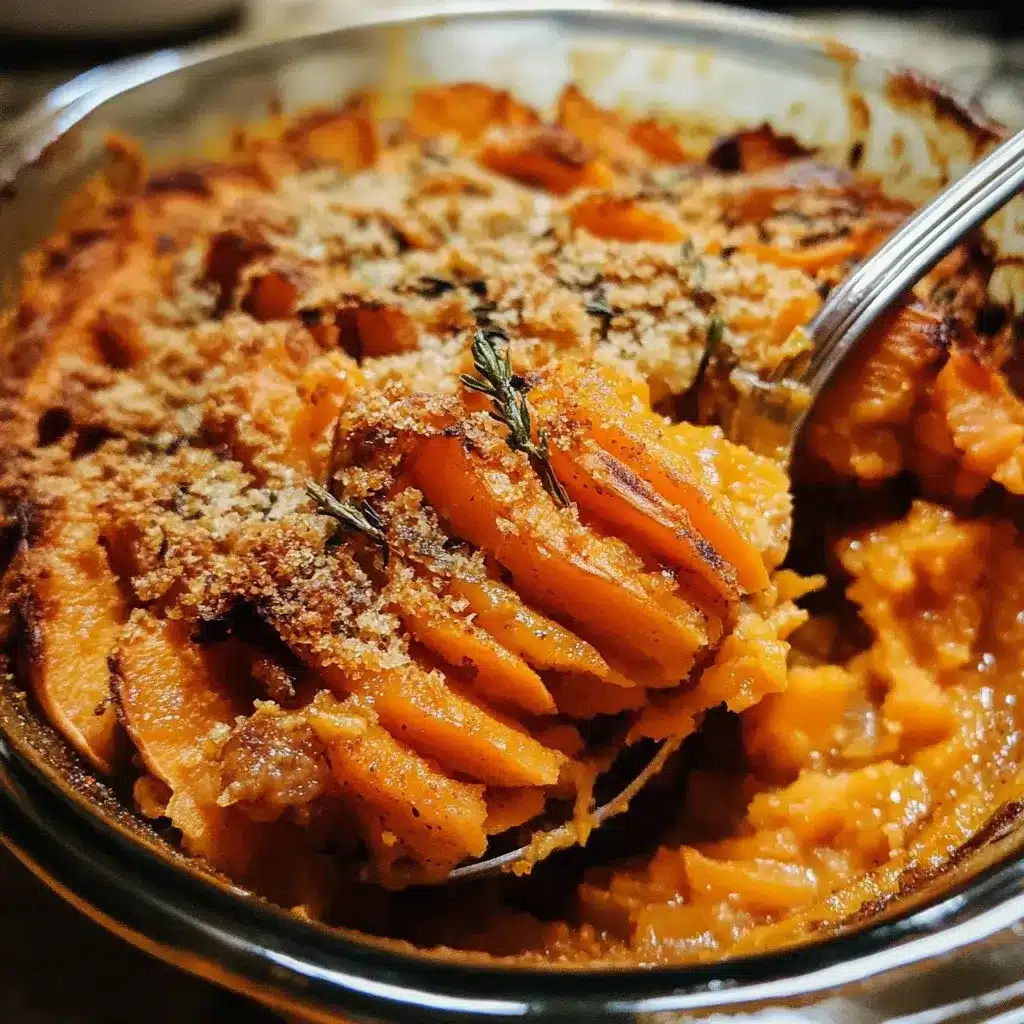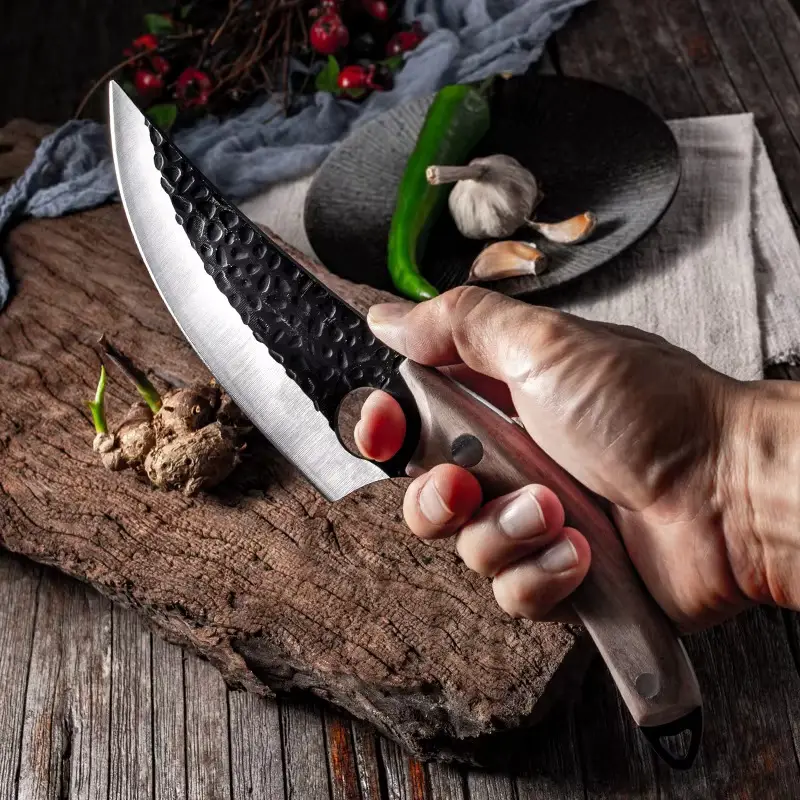Around our Thanksgiving table, amidst the turkey and cranberry sauce, there’s always one dish that sparks the most fervent debates and elicits the loudest “mmmms” – my Sweet Potato Casserole. It’s not just a side dish; it’s a nostalgic hug on a plate, a comforting blend of creamy sweetness and nutty crunch. Over the years, I’ve tweaked and perfected this recipe, and let me tell you, it’s a guaranteed crowd-pleaser. Even my pickiest nephew, who once declared sweet potatoes “too orange,” is now a devout convert. This isn’t your average casserole; it’s a symphony of textures and flavors that will elevate any meal, from festive holidays to cozy weeknight dinners. Get ready to experience sweet potato casserole like never before – prepare for smiles, second helpings, and maybe even a little friendly competition for the last scoop!
Ingredients: The Heart of Sweet Potato Casserole
- Sweet Potatoes (3 pounds): The star of the show! Choose firm, unblemished sweet potatoes. Their natural sweetness and creamy texture when cooked form the base of this comforting casserole.
- Unsalted Butter (1/2 cup, 1 stick): Butter adds richness and flavor to both the sweet potato base and the crumbly topping. Unsalted allows you to control the overall saltiness of the dish.
- Brown Sugar (1/2 cup, packed): Brown sugar lends a molasses-like depth of sweetness that beautifully complements the sweet potatoes and adds a hint of caramel flavor.
- Granulated Sugar (1/4 cup): A touch of granulated sugar balances the brown sugar and adds a cleaner sweetness to the casserole.
- Milk (1/2 cup): Milk adds moisture and creaminess to the sweet potato mixture, creating a smooth and luscious texture. You can use dairy or non-dairy milk based on your preference.
- Eggs (2 large): Eggs act as a binder, holding the casserole together and adding richness and structure to the sweet potato base.
- Vanilla Extract (1 teaspoon): Vanilla extract enhances the overall sweetness and adds a warm, aromatic note that complements the spices.
- Ground Cinnamon (1 teaspoon): Cinnamon brings a warm, comforting spice that’s classic in sweet potato dishes, adding depth and complexity to the flavor profile.
- Ground Nutmeg (1/2 teaspoon): Nutmeg adds a subtle warmth and slightly peppery note that complements the cinnamon and sweet potato, creating a well-rounded spice blend.
- Salt (1/4 teaspoon): Salt enhances the sweetness and balances the flavors of all the ingredients, preventing the casserole from being overly sweet.
- Pecans (1 cup, chopped): Pecans provide a delightful crunch and nutty flavor to the topping, contrasting beautifully with the creamy sweet potato base. You can also use walnuts or other nuts if preferred.
- All-Purpose Flour (1/2 cup): Flour in the topping helps create a crumbly texture and binds the butter, sugar, and pecans together.
- Rolled Oats (1/2 cup, optional): Rolled oats add extra texture and a subtle nutty flavor to the topping, making it even more delicious and slightly healthier.
Instructions: Crafting the Perfect Sweet Potato Casserole
- Prepare the Sweet Potatoes: Preheat your oven to 400°F (200°C). Wash and dry the sweet potatoes. You can either bake them whole or peel and cube them for faster cooking. For whole baking, pierce each sweet potato several times with a fork. Place them directly on the oven rack or on a baking sheet. Baking whole sweet potatoes intensifies their natural sweetness and results in a smoother, more flavorful puree. Roasting brings out the sugars in the sweet potatoes in a way that boiling or microwaving simply cannot replicate, contributing to a richer, more complex flavor in your final casserole.
- Bake the Sweet Potatoes: Bake the sweet potatoes until they are very tender and easily pierced with a fork. This will take approximately 45-60 minutes for whole sweet potatoes, or about 25-30 minutes for cubed sweet potatoes. The baking time will vary depending on the size of your sweet potatoes. You’ll know they’re ready when they are soft to the touch and the skin wrinkles slightly. Properly cooked sweet potatoes are crucial for a smooth and creamy casserole base. Undercooked sweet potatoes will be hard to mash and may result in a lumpy texture.
- Cool and Scoop the Sweet Potato Flesh: Once the sweet potatoes are cool enough to handle, slice them open lengthwise (if baked whole) and scoop out the flesh into a large mixing bowl. If you baked cubed sweet potatoes, simply transfer them to the bowl. Discard the skins. While some people might consider using the sweet potato skins for other recipes, for this casserole, we want only the smooth, creamy flesh to create the desired texture.
- Mash the Sweet Potatoes: Using a potato masher, electric mixer, or a stand mixer, mash the sweet potato flesh until smooth and creamy. If using an electric mixer, be careful not to overmix, as this can make the sweet potatoes gummy. Mashing to a smooth consistency is key for the luxurious texture of the casserole. For an extra smooth result, you can even use an immersion blender or food processor, but be mindful not to over-process.
- Combine Wet Ingredients: To the mashed sweet potatoes, add the melted butter, brown sugar, granulated sugar, milk, eggs, vanilla extract, cinnamon, nutmeg, and salt. If your butter isn’t already melted, melt it in a microwave-safe bowl or saucepan and allow it to cool slightly before adding it to the mixture. Adding slightly cooled melted butter prevents the eggs from cooking prematurely.
- Mix the Sweet Potato Base: Beat all the ingredients together until well combined and smooth. Ensure that all the sugars are dissolved and the spices are evenly distributed throughout the mixture. Taste the mixture at this stage and adjust sweetness or spices to your preference. Some people prefer a slightly sweeter casserole, while others might like a stronger spice flavor. This is your chance to customize it!
- Prepare the Topping: In a separate medium bowl, combine the chopped pecans, flour, rolled oats (if using), brown sugar, and melted butter for the topping. Use your fingers or a fork to mix the ingredients together until they are crumbly and well combined. The topping should resemble coarse crumbs. The combination of flour, butter, and sugar creates a classic streusel-like topping that adds both sweetness and a delightful textural contrast.
- Assemble the Casserole: Preheat your oven to 350°F (175°C). Pour the sweet potato mixture into a greased 9×13 inch baking dish. Greasing the dish prevents the casserole from sticking and makes serving easier. A 9×13 inch dish is the standard size for casseroles and provides ample space for the sweet potato mixture and topping.
- Sprinkle the Topping: Evenly sprinkle the pecan topping over the sweet potato mixture in the baking dish. Make sure to distribute the topping evenly so that every bite of casserole has a satisfying crunch.
- Bake the Casserole: Bake in the preheated oven for 25-30 minutes, or until the topping is golden brown and the sweet potato casserole is heated through and bubbly around the edges. The baking time might vary slightly depending on your oven. Keep an eye on the topping and cover loosely with foil if it starts to brown too quickly before the casserole is heated through. Baking until bubbly ensures the casserole is heated all the way through and the flavors have melded together beautifully.
- Cool Slightly and Serve: Let the sweet potato casserole cool slightly for about 10-15 minutes before serving. This allows the casserole to set up a bit and makes it easier to serve. Serving it slightly warm enhances the flavors and textures. The aroma of the warm spices and toasted pecans will fill your kitchen, making everyone eager to dig in!
Nutrition Facts: A Delicious and Nutritious Treat
(Please note: Nutrition facts are estimates and can vary based on specific ingredients and portion sizes. The values below are approximate per serving, assuming 10 servings per 9×13 inch casserole.)
- Servings: Approximately 10
- Calories per Serving: Approximately 350-400 kcal
- Total Fat: 18-22g
Nutritional Highlights:
- Excellent Source of Vitamin A: Sweet potatoes are packed with beta-carotene, which the body converts to Vitamin A, crucial for vision, immune function, and skin health.
- Good Source of Vitamin C: Sweet potatoes also provide a good amount of Vitamin C, an antioxidant that supports immune function and collagen production.
- Rich in Fiber: The fiber content in sweet potatoes aids digestion, promotes satiety, and helps regulate blood sugar levels.
- Potassium Powerhouse: Sweet potatoes are a good source of potassium, an electrolyte important for maintaining healthy blood pressure and muscle function.
Important Considerations:
While sweet potato casserole is a delicious and relatively nutritious side dish, it’s important to be mindful of portion sizes due to its calorie and sugar content. Enjoy it as a treat in moderation as part of a balanced diet. You can also make healthier swaps, such as reducing the amount of sugar or using whole wheat flour in the topping to increase the fiber content.
Preparation Time: From Pantry to Plate
- Prep Time: 20-25 minutes (This includes washing and preparing sweet potatoes, mixing the sweet potato base, and making the topping). The prep time can be slightly reduced if you opt for pre-cubed sweet potatoes, but roasting whole sweet potatoes is highly recommended for the best flavor and texture. Efficiently organizing your ingredients and tools before starting can also help streamline the prep process.
- Cook Time: 45-60 minutes for baking sweet potatoes, plus 25-30 minutes for baking the casserole. The total cook time will depend on whether you bake the sweet potatoes whole or cubed and your oven’s performance. It’s always a good idea to check for doneness a few minutes before the recommended time, especially when baking casseroles, as ovens can vary.
- Total Time: Approximately 1 hour 30 minutes to 1 hour 55 minutes. While the total time might seem a bit lengthy, much of it is hands-off baking time. You can use this time to prepare other dishes or simply relax while your kitchen fills with the delightful aroma of sweet potato casserole.
Make-Ahead Tip: You can bake the sweet potatoes ahead of time (up to 2 days) and store the scooped flesh in the refrigerator. You can also prepare the sweet potato mixture and the topping separately a day ahead and assemble and bake the casserole just before serving. This makes it a great dish for holiday gatherings or potlucks where you might want to spread out the cooking tasks.
How to Serve Sweet Potato Casserole: Versatile and Delightful
Sweet potato casserole is incredibly versatile and can be served in various ways to complement different meals and occasions. Here are some serving suggestions:
- Classic Holiday Side Dish: A must-have on Thanksgiving, Christmas, and Easter tables. It pairs beautifully with roasted turkey, ham, chicken, or vegetarian mains.
- Weeknight Dinner Upgrade: Elevate a simple weeknight meal by serving sweet potato casserole alongside roasted chicken, pork chops, or grilled fish.
- Vegetarian Main Course Accompaniment: Serve it as a hearty side dish with vegetarian entrees like lentil loaf, stuffed bell peppers, or mushroom Wellington.
- Dessert-Inspired Serving: For a sweeter treat, serve smaller portions of sweet potato casserole as a dessert. Add a dollop of whipped cream or a scoop of vanilla ice cream for an extra indulgent touch.
- Warm or Room Temperature: Sweet potato casserole can be served warm, straight from the oven, or at room temperature. It reheats well, making it great for leftovers.
- Garnish Options:
- Extra Pecans: Sprinkle extra chopped pecans on top for added crunch and visual appeal.
- Whipped Cream or Marshmallows: For a classic touch, top with a swirl of whipped cream or mini marshmallows (broil briefly for toasted marshmallows).
- Maple Syrup Drizzle: A drizzle of pure maple syrup enhances the natural sweetness of the casserole.
- Fresh Herbs: A sprig of fresh rosemary or thyme can add a subtle savory note and beautiful garnish.
Additional Tips for Sweet Potato Casserole Perfection
- Roast, Don’t Boil: Roasting sweet potatoes intensifies their natural sweetness and results in a drier, more flavorful puree compared to boiling. Boiling can make them waterlogged, affecting the texture of the casserole. Roasting also caramelizes the sugars, adding depth of flavor.
- Customize Your Spices: Experiment with different spices to tailor the flavor profile to your liking. Try adding a pinch of ginger, cardamom, or cloves for a unique twist. Pumpkin pie spice blend can also be a convenient and delicious option.
- Nutty Variations: While pecans are classic, feel free to substitute with other nuts like walnuts, almonds, or even hazelnuts for the topping. Toasting the nuts lightly before chopping enhances their flavor and crunch.
- Dairy-Free Options: For a dairy-free version, use plant-based milk like almond milk, soy milk, or oat milk. Substitute melted coconut oil for butter in both the base and the topping. Ensure your chosen plant-based milk is unsweetened to control the overall sweetness.
- Sweetness Control: Adjust the amount of sugar to your preference. If you prefer a less sweet casserole, reduce the amount of brown and granulated sugar. You can also use natural sweeteners like maple syrup or honey in moderation, keeping in mind they add moisture and may slightly alter the texture.
- Make it Ahead for Stress-Free Holidays: Assemble the casserole a day ahead and store it, covered, in the refrigerator. Bake it as directed before serving. You can also bake it completely ahead of time and reheat it gently in the oven before serving.
- Freezer-Friendly for Future Feasts: Sweet potato casserole freezes well. Bake and cool the casserole completely, then wrap it tightly in plastic wrap and aluminum foil. Freeze for up to 2-3 months. Thaw overnight in the refrigerator and reheat in the oven at 350°F (175°C) until heated through.
- Texture Tweaks: For a smoother casserole, use an electric mixer or stand mixer to mash the sweet potatoes. For a slightly chunkier texture, mash them by hand with a potato masher. The level of mashing is a matter of personal preference.
FAQ Section: Your Sweet Potato Casserole Questions Answered
Q1: Can I use canned sweet potatoes or yams instead of fresh sweet potatoes?
A: While fresh sweet potatoes are highly recommended for the best flavor and texture, you can use canned sweet potatoes or yams in syrup in a pinch. Drain them well and rinse them lightly to remove excess syrup before mashing. Be mindful that canned sweet potatoes are often sweeter and softer than fresh, so you may need to adjust the sugar and milk in the recipe accordingly.
Q2: Can I make sweet potato casserole without eggs?
A: Yes, you can make an egg-free version. To replace the binding function of eggs, you can use a flax egg (1 tablespoon flaxseed meal mixed with 3 tablespoons water, let it sit for 5 minutes to thicken) or ¼ cup of unsweetened applesauce per egg. The texture might be slightly less firm, but it will still be delicious.
Q3: What can I use if I don’t have pecans for the topping?
A: Walnuts are a great substitute for pecans in the topping. You can also use almonds, hazelnuts, or even a mixture of different nuts. For a nut-free option, consider using toasted pumpkin seeds or sunflower seeds for crunch.
Q4: Can I make this casserole vegan?
A: Yes, it’s easily adaptable to be vegan. Use plant-based milk and coconut oil instead of dairy milk and butter. Replace eggs with flax eggs or applesauce as mentioned earlier. Ensure your brown sugar is vegan-friendly (some brands use bone char in processing – look for certified vegan brands if concerned).
Q5: My sweet potato casserole is too runny. How can I fix it?
A: If your casserole is too runny, it could be due to excess moisture in the sweet potatoes or too much liquid in the recipe. To thicken it, you can bake it for a longer time to allow excess moisture to evaporate. Alternatively, you can mix in a tablespoon of cornstarch or arrowroot starch into a small amount of milk and stir it into the sweet potato mixture before baking to help it set up.
Q6: How long does sweet potato casserole last in the refrigerator?
A: Properly stored sweet potato casserole will last for 3-4 days in the refrigerator. Ensure it’s cooled completely before covering it tightly with plastic wrap or storing it in an airtight container. Reheat thoroughly before serving.
Q7: Can I add marshmallows to the topping instead of pecans?
A: Yes, marshmallows are a classic topping for sweet potato casserole. Sprinkle mini marshmallows over the casserole during the last 5-10 minutes of baking and broil briefly until they are puffed and lightly browned. Be careful not to burn them.
Q8: What are some savory variations of sweet potato casserole?
A: While traditionally sweet, you can create savory sweet potato casserole variations. Reduce or eliminate the sugar, and add savory spices like smoked paprika, garlic powder, onion powder, or chili powder. You can also incorporate ingredients like roasted vegetables (onions, bell peppers, corn), black beans, or cheese for a more savory and substantial dish. Consider topping it with breadcrumbs or crispy fried onions instead of a sweet pecan topping for a truly savory twist.

Sweet Potato Casserole Recipe
Ingredients
- Sweet Potatoes (3 pounds): The star of the show! Choose firm, unblemished sweet potatoes. Their natural sweetness and creamy texture when cooked form the base of this comforting casserole.
- Unsalted Butter (1/2 cup, 1 stick): Butter adds richness and flavor to both the sweet potato base and the crumbly topping. Unsalted allows you to control the overall saltiness of the dish.
- Brown Sugar (1/2 cup, packed): Brown sugar lends a molasses-like depth of sweetness that beautifully complements the sweet potatoes and adds a hint of caramel flavor.
- Granulated Sugar (1/4 cup): A touch of granulated sugar balances the brown sugar and adds a cleaner sweetness to the casserole.
- Milk (1/2 cup): Milk adds moisture and creaminess to the sweet potato mixture, creating a smooth and luscious texture. You can use dairy or non-dairy milk based on your preference.
- Eggs (2 large): Eggs act as a binder, holding the casserole together and adding richness and structure to the sweet potato base.
- Vanilla Extract (1 teaspoon): Vanilla extract enhances the overall sweetness and adds a warm, aromatic note that complements the spices.
- Ground Cinnamon (1 teaspoon): Cinnamon brings a warm, comforting spice that’s classic in sweet potato dishes, adding depth and complexity to the flavor profile.
- Ground Nutmeg (1/2 teaspoon): Nutmeg adds a subtle warmth and slightly peppery note that complements the cinnamon and sweet potato, creating a well-rounded spice blend.
- Salt (1/4 teaspoon): Salt enhances the sweetness and balances the flavors of all the ingredients, preventing the casserole from being overly sweet.
- Pecans (1 cup, chopped): Pecans provide a delightful crunch and nutty flavor to the topping, contrasting beautifully with the creamy sweet potato base. You can also use walnuts or other nuts if preferred.
- All-Purpose Flour (1/2 cup): Flour in the topping helps create a crumbly texture and binds the butter, sugar, and pecans together.
- Rolled Oats (1/2 cup, optional): Rolled oats add extra texture and a subtle nutty flavor to the topping, making it even more delicious and slightly healthier.
Instructions
- Prepare the Sweet Potatoes: Preheat your oven to 400°F (200°C). Wash and dry the sweet potatoes. You can either bake them whole or peel and cube them for faster cooking. For whole baking, pierce each sweet potato several times with a fork. Place them directly on the oven rack or on a baking sheet. Baking whole sweet potatoes intensifies their natural sweetness and results in a smoother, more flavorful puree. Roasting brings out the sugars in the sweet potatoes in a way that boiling or microwaving simply cannot replicate, contributing to a richer, more complex flavor in your final casserole.
- Bake the Sweet Potatoes: Bake the sweet potatoes until they are very tender and easily pierced with a fork. This will take approximately 45-60 minutes for whole sweet potatoes, or about 25-30 minutes for cubed sweet potatoes. The baking time will vary depending on the size of your sweet potatoes. You’ll know they’re ready when they are soft to the touch and the skin wrinkles slightly. Properly cooked sweet potatoes are crucial for a smooth and creamy casserole base. Undercooked sweet potatoes will be hard to mash and may result in a lumpy texture.
- Cool and Scoop the Sweet Potato Flesh: Once the sweet potatoes are cool enough to handle, slice them open lengthwise (if baked whole) and scoop out the flesh into a large mixing bowl. If you baked cubed sweet potatoes, simply transfer them to the bowl. Discard the skins. While some people might consider using the sweet potato skins for other recipes, for this casserole, we want only the smooth, creamy flesh to create the desired texture.
- Mash the Sweet Potatoes: Using a potato masher, electric mixer, or a stand mixer, mash the sweet potato flesh until smooth and creamy. If using an electric mixer, be careful not to overmix, as this can make the sweet potatoes gummy. Mashing to a smooth consistency is key for the luxurious texture of the casserole. For an extra smooth result, you can even use an immersion blender or food processor, but be mindful not to over-process.
- Combine Wet Ingredients: To the mashed sweet potatoes, add the melted butter, brown sugar, granulated sugar, milk, eggs, vanilla extract, cinnamon, nutmeg, and salt. If your butter isn’t already melted, melt it in a microwave-safe bowl or saucepan and allow it to cool slightly before adding it to the mixture. Adding slightly cooled melted butter prevents the eggs from cooking prematurely.
- Mix the Sweet Potato Base: Beat all the ingredients together until well combined and smooth. Ensure that all the sugars are dissolved and the spices are evenly distributed throughout the mixture. Taste the mixture at this stage and adjust sweetness or spices to your preference. Some people prefer a slightly sweeter casserole, while others might like a stronger spice flavor. This is your chance to customize it!
- Prepare the Topping: In a separate medium bowl, combine the chopped pecans, flour, rolled oats (if using), brown sugar, and melted butter for the topping. Use your fingers or a fork to mix the ingredients together until they are crumbly and well combined. The topping should resemble coarse crumbs. The combination of flour, butter, and sugar creates a classic streusel-like topping that adds both sweetness and a delightful textural contrast.
- Assemble the Casserole: Preheat your oven to 350°F (175°C). Pour the sweet potato mixture into a greased 9×13 inch baking dish. Greasing the dish prevents the casserole from sticking and makes serving easier. A 9×13 inch dish is the standard size for casseroles and provides ample space for the sweet potato mixture and topping.
- Sprinkle the Topping: Evenly sprinkle the pecan topping over the sweet potato mixture in the baking dish. Make sure to distribute the topping evenly so that every bite of casserole has a satisfying crunch.
- Bake the Casserole: Bake in the preheated oven for 25-30 minutes, or until the topping is golden brown and the sweet potato casserole is heated through and bubbly around the edges. The baking time might vary slightly depending on your oven. Keep an eye on the topping and cover loosely with foil if it starts to brown too quickly before the casserole is heated through. Baking until bubbly ensures the casserole is heated all the way through and the flavors have melded together beautifully.
- Cool Slightly and Serve: Let the sweet potato casserole cool slightly for about 10-15 minutes before serving. This allows the casserole to set up a bit and makes it easier to serve. Serving it slightly warm enhances the flavors and textures. The aroma of the warm spices and toasted pecans will fill your kitchen, making everyone eager to dig in!
Nutrition
- Serving Size: one normal portion
- Calories: 400
- Fat: 22g






